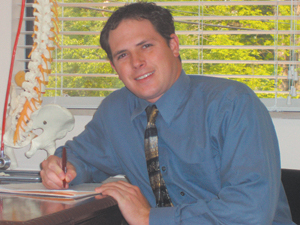A HEALTHY DAY
 WHAT ABOUT YOUR FEET?
WHAT ABOUT YOUR FEET?
Did you know that your foot supports not only your own body weight, but also your body weight times three and a half with every step? The average person takes in an excess of 10,000 steps per day, most of which are on concrete. This should give you some idea as to the enormity of the forces endured by the foot (Glaser). This is why we have chronic foot pain as well as why it has been theorized that our feet become flatter as we age due to the fact that our bodies cannot stay strong and compete with these forces. After time, exercise and rehabilitation can no longer help those of you who have flat feet, thus it must be taken care of by other means.
There are two different types of flat feet, congenital and acquired. Congenital means that you are born with flat feet and therefore, it is a structural problem. When someone has acquired flat feet it is a functional problem. It can be caused by a number of different reasons and thus can lead to different problems in the long run. This article is going to cover the causes of flat feet, some of the problems resulting from having flat feet, who is at risk of getting flat feet, and ways to correct it.
First let’s discuss some of the anatomical causes of flat feet. Within our body there are muscles, ligaments, tendons and fascia (the layer surrounding muscle) which all connect to one another to make our body a functional machine. These connections are the reason why we swing our arms at the same time but in opposite direction as our legs when we walk. One of the most important connection-pathways consists of starting at the foot with a group of muscles that go up the back, front, and side of the foot, which connect to the tibia (shin bone) or fibula (outside bone). The fibula also has connections to the hamstring muscles (biceps famous) that attaches to the tailbone via the sacrotuberous ligament. Then there are some fascial attachments to the back muscles that eventually connect to other muscles (indirectly) of the arms and neck. This is why a person who has a foot problem will often times have problems in other parts of the body such as their back, neck, shoulder, and arm. This can also occur vice versa, in which someone who has a problem in the pelvis can cause a kinetic chain imbalance in their foot therefore disrupting ones gait and changing foot mechanics. Other causes can include, increased body weight, scoliosis, gait abnormalities, increased age, knee, hip, and pelvic problems, diabetes, and trauma, to name a few. These problems can then lead to a functional imbalance in the foot by causing it to either be flat or disrupt the gait pattern resulting in the following problems.
“These are some of the problems associated with faulty foot mechanics and most can be corrected or contained. Hallux Abducto Valgus: Bunions, Dorsal Bunions, Inter-phalangeal Sesamoids, Pinch Callus, Stress Fracture, Morton’s Neuroma, Sub-metatarsal Bursitis: Metatarsalgia, Tailor’s Bunions, Met-cuneiform Exostosis: Saddle Bone, Peroneal Tendonitis, Tibialis Anterior Tendonitis & Shin Splints, Accessory Navicular, Plantar Fasciitis, Heel Spur, Sub-Calcaneal Bursitis, Retro-Calcaneal Bursitis & Achilles Tendonitis, Muscular Cramps; foot and leg, Lateral Ankle Pain, Chondromalacia Patella or Patello-femoral Syndrone, Low Back Pain, Radiculopathy or Dorsal Root Nerve Compression, Greater Trochanteric Bursitis, Sacroiliac Pain, Sciatica, and Disc Compression / Herniation.” (Glaser). There is much more to explain as far as the mechanics of the problem goes. You may call me if you have any more questions regarding the exact process for the cause of the mentioned problems in this article, or any other questions you may have about the pain you are experiencing. After all, every problem is unique to each individual and it is important to be aware of the above problems to see if you might think you need help. If you do then there is something that can be done to help you.
I have been trained to diagnose and cast patients for a functional foot orthotic or shoe insert called “Sole Supports” which consists of a custom made and molded orthotic for each individual. Patients come into my office for treatment and I look not only at their pain but try to find the source of their pain or the problem. Most of my patients who have low back problems usually have a foot problem also. I have found that by correcting their feet biomechanics that the rest of the body follows the correction and eventually cures their back pain. If you or anyone you know has any of the above problems or if they think they do then have them give me a call and I can see if I can help. I am currently offering free consultations for anyone who might have a question. I cannot tell you nor help you over the phone because I need to see what is going on. Again please contact me by phone at 260-459-2205 or by e-mail at drnill@nillfamilychiropractic.com if you have any questions or if you want to come in for the consultation.
Thank you and have a healthy day!
Dr. James P. Nill DC.
References:
Edward S. Glaser, DPM
President and Founder of Sole Supports, Inc., Biomechanical Laboratory
- Celebrating 20 Years Of Community At The Stand - April 12, 2024
- First Positive Case Of Chronic Wasting Disease In Indiana - April 12, 2024
- Southwest Allen County Schools Embark On Major Tree Plantings - April 12, 2024


